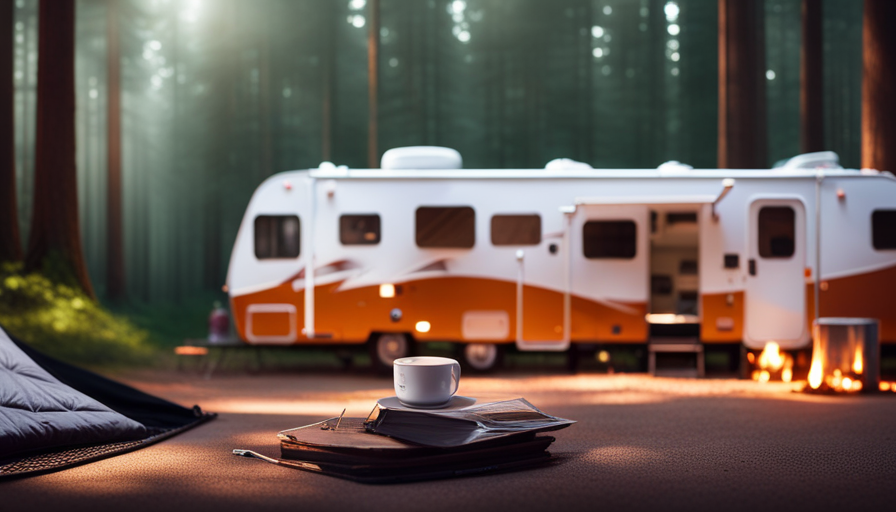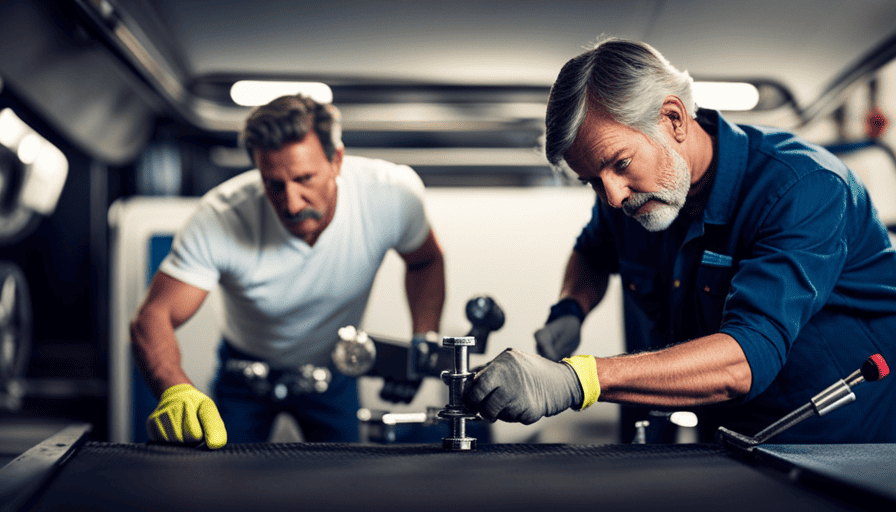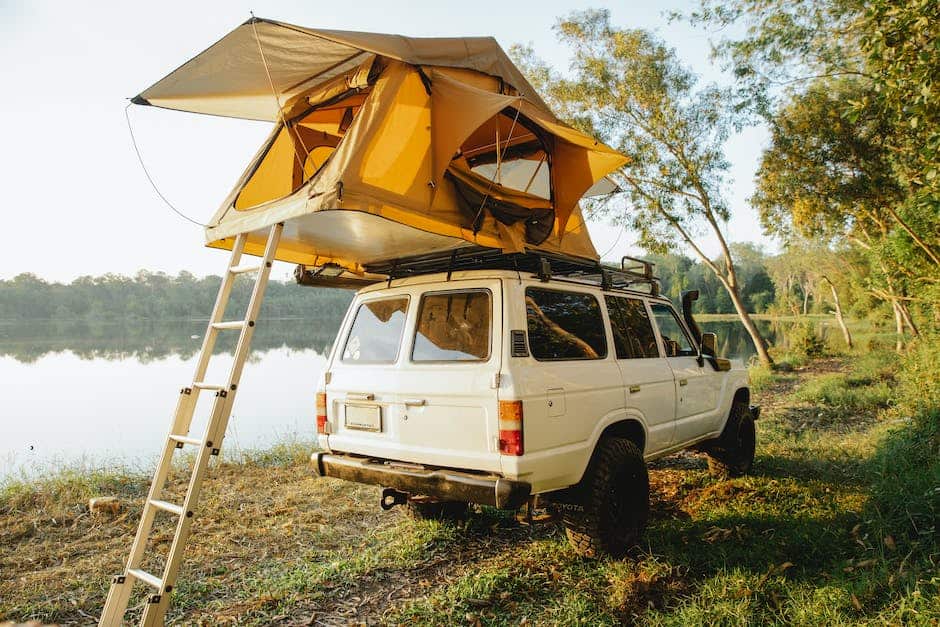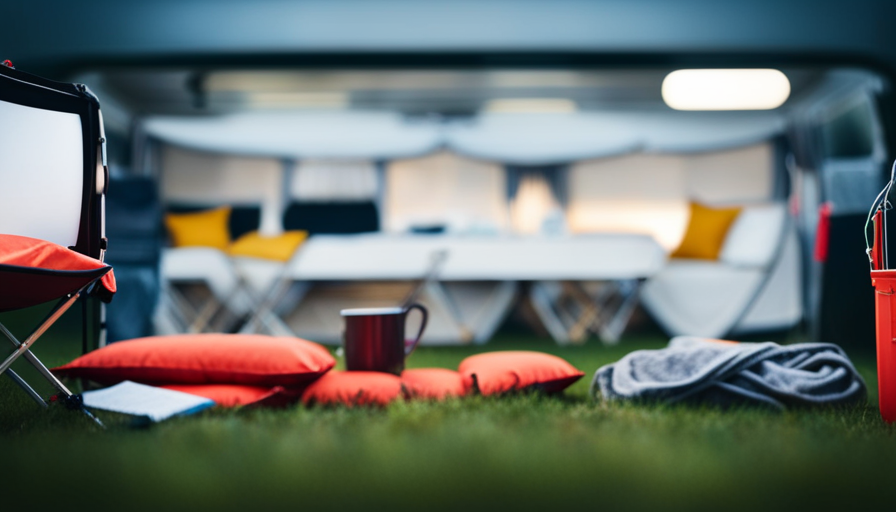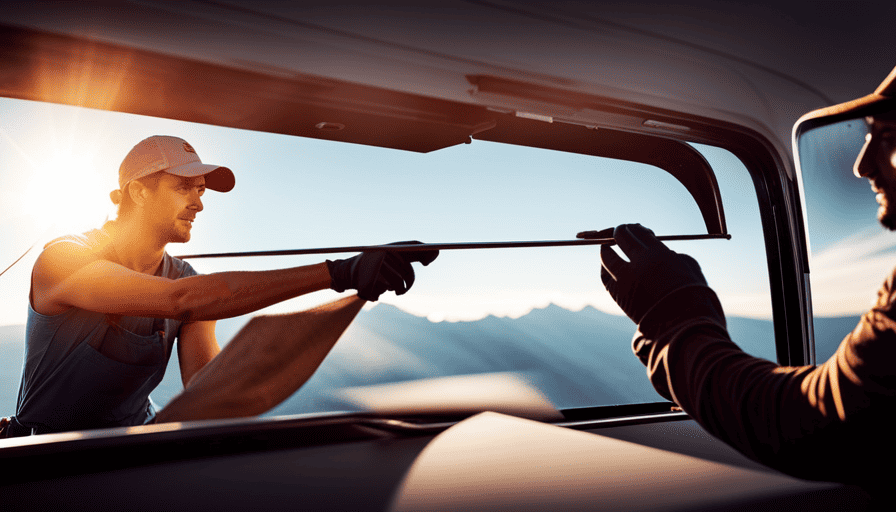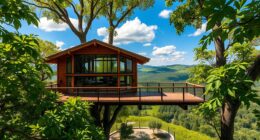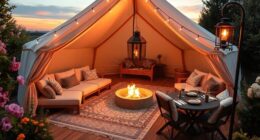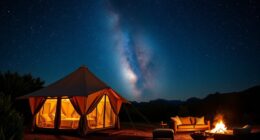Picture this situation: It’s a beautiful summer day, the sun is shining brightly, and you can almost smell the scent of s’mores roasting over a crackling campfire. But there’s a problem – you don’t have a camper. Don’t worry, because I have a solution for you.
In this article, I’ll be delving into the world of pop-up camper rentals, giving you all the information you need to know about how much it costs to rent one.
From the location of the rental to the size and type of camper, there are several factors that can affect the price. Are you looking to explore the great outdoors for a weekend or a whole month? The duration of your rental will also play a role in determining the cost. And let’s not forget about the additional features and amenities that can enhance your camping experience.
But it doesn’t stop there. Delivery and setup fees, mileage restrictions, and cancellation policies are all important factors to consider when renting a pop-up camper. And of course, we’ll be comparing prices from different providers to help you find the best deal.
So, whether you’re a seasoned camper or a first-timer, get ready to hit the road and make some unforgettable memories in a pop-up camper. Let’s dive in and find out how much it really costs to rent one!
Key Takeaways
- Pop-up camper rental rates and availability vary depending on the location, with popular camping destinations and tourist areas tending to have higher rates.
- Venturing off the beaten path can lead to more affordable pop-up camper rental options.
- Rental duration affects the cost and allows for flexibility in exploring different locations.
- Renting a pop-up camper can be a more affordable option compared to staying in a hotel.
Location of Rental
If you’re wondering where to rent a pop-up camper, you’ll find that location plays a crucial role in determining the cost. Rental rates and availability vary depending on where you’re looking to rent.
In popular camping destinations or tourist areas, the demand for pop-up campers is typically higher, which can drive up the rental rates. On the other hand, if you’re willing to venture off the beaten path or consider less popular camping spots, you may find more affordable options.
When it comes to location, it’s important to consider not only the cost but also the convenience and amenities available. Some rental companies may offer additional services such as delivery and setup, which can make your camping experience more enjoyable. It’s also worth noting that certain locations may have restrictions or requirements for pop-up camper rentals, so be sure to check for any local regulations before making your reservation.
Now that you have an idea of how location affects rental rates and availability, let’s move on to the next step: the duration of rental.
Duration of Rental
The length of time you choose to book a pop-up camper greatly impacts your adventure. When considering the duration of your rental, it’s essential to weigh the cost comparison between renting a pop-up camper and staying in a hotel.
Renting a pop-up camper can often be a more affordable option, allowing you to save money that can be used for other vacation expenses. Plus, it provides a unique and immersive experience that a hotel simply cannot match.
For a weekend getaway, renting a pop-up camper is especially advantageous. It offers the freedom to explore different locations and campgrounds, giving you the opportunity to connect with nature and enjoy the great outdoors. Additionally, you have the convenience of having all your essentials with you, such as a kitchenette, bathroom facilities, and a cozy sleeping area.
Transitioning into the subsequent section about the size and type of pop-up camper, it’s important to consider the ideal camper that suits your needs.
Size and Type of Pop-Up Camper
When considering the perfect fit for your adventure, it’s crucial to explore the various sizes and types of pop-up campers available. Pop-up campers come in a range of sizes and styles, each offering its own unique advantages.
Here are a few options to consider:
-
Compact and Lightweight: These pop-up campers are perfect for those who want to travel light. They’re easy to tow and maneuver, making them ideal for first-time campers or those who prefer a minimalistic camping experience. Their smaller size also means they’re easier to set up and pack away.
-
Spacious and Family-Friendly: If you’re traveling with a larger group or have a family, a larger pop-up camper might be the way to go. These campers offer more space for sleeping, dining, and storage, ensuring everyone has their own comfortable spot.
-
Off-Road Capable: For those seeking adventure off the beaten path, there are pop-up campers designed for off-road travel. These campers are built to withstand rough terrain and often come equipped with features like reinforced chassis, heavy-duty suspension, and rugged tires.
Considering the weight and setup of a pop-up camper is essential when choosing the right one for your needs. Now that you have an idea of the different sizes and types available, let’s move on to the next section about seasonal demand.
Seasonal Demand
As the seasons change, the demand for experiencing the great outdoors in a home away from home on wheels fluctuates like the ebb and flow of a river. The popularity of pop-up campers varies throughout the year, with certain seasons seeing a higher demand than others.
During the summer months, when the weather is warm and sunny, there is a significant increase in the number of people looking to rent pop-up campers. Families and outdoor enthusiasts flock to campgrounds and national parks, seeking adventure and relaxation. On the other hand, during the colder months, the demand for pop-up campers tends to decrease. The impact of weather conditions is a major factor in this fluctuation. People are less inclined to venture outdoors and camp in chilly or rainy weather, leading to a decrease in the demand for pop-up camper rentals. However, there are still avid campers who brave the elements and enjoy the quiet solitude of nature during these seasons.
Transitioning into the next section about additional features and amenities, it is important to consider what makes a pop-up camper desirable beyond seasonal demand.
Additional Features and Amenities
Imagine your camping experience being elevated with added features and amenities that enhance your outdoor adventures. When it comes to renting a pop-up camper, there are various customization options available to suit your specific needs and preferences. Whether you prefer extra storage space, a built-in kitchenette, or a cozy sleeping area, these customization options can make your camping trip more comfortable and convenient.
Here are four popular customization options you can consider when renting a pop-up camper:
-
Slide-out dinette: This feature provides additional seating and dining space, perfect for enjoying meals with family and friends.
-
Electric awning: An electric awning provides shade and protection from the elements, allowing you to relax and unwind outside the camper.
-
Air conditioning: Stay cool and comfortable during hot summer days with an air-conditioned pop-up camper.
-
Outdoor shower: Some pop-up campers offer an outdoor shower, allowing you to rinse off after a day of hiking or swimming.
In addition to customization options, many pop-up campers also offer pet-friendly accommodations. This means you can bring your furry friend along on your camping adventure without any worries.
With these added features and amenities, renting a pop-up camper can provide you with a comfortable and enjoyable camping experience.
Next, let’s discuss the important aspects of insurance and security deposit.
Insurance and Security Deposit
Now that we have explored the additional features and amenities that pop-up campers can offer, let’s discuss the importance of insurance coverage and security deposits when renting one.
When renting a pop-up camper, it is crucial to consider insurance coverage for any potential damages or accidents that may occur during your trip. Most rental companies offer insurance options that can provide peace of mind and protect you from unexpected expenses. These insurance plans typically include coverage for damage to the camper, liability protection, and sometimes even roadside assistance.
In addition to insurance, rental companies often require a refundable security deposit. This deposit acts as a form of protection for the rental company in case of any damages or loss of equipment during your rental period. The amount of the security deposit can vary depending on the rental company and the value of the camper.
To help you better understand the importance of insurance coverage and security deposits, here is a table summarizing the key points:
| Aspect | Insurance Coverage | Security Deposit |
|---|---|---|
| Purpose | Protection against damages and accidents | Protection against damages or loss of equipment |
| Coverage | Damage to the camper, liability, roadside assistance (sometimes) | Varies depending on the rental company and camper value |
| Cost | Additional fee on top of the rental price | Refundable deposit |
Now that we know the importance of insurance coverage and security deposits, let’s move on to the next section about delivery and setup fees.
Delivery and Setup Fees
One potential concern that may arise is the additional cost associated with delivery and setup fees for your rented camper. These hidden costs can sometimes catch you off guard, so it’s essential to factor them into your budget when planning your trip.
Here are three things you should know about delivery and setup fees:
-
Pricing: Delivery and setup fees can vary depending on the rental company and the distance to your desired location. Some companies offer a flat rate, while others charge based on mileage or time spent on setup. It’s crucial to inquire about these costs upfront to avoid any surprises.
-
Negotiation options: Don’t be afraid to negotiate delivery and setup fees. Some rental companies may be willing to lower the cost, especially if you’re renting for an extended period or during the off-peak season. It’s always worth asking if there’s any room for negotiation.
-
DIY option: If you’re looking to save some money, consider picking up the camper yourself and setting it up. Many rental companies offer this option and provide detailed instructions to ensure a smooth setup process. Just make sure you have the necessary equipment and feel comfortable towing and setting up the camper.
Considering these hidden costs and negotiation options for delivery and setup fees, it’s important to also be aware of mileage restrictions when renting a pop-up camper.
Mileage Restrictions
When planning your trip with a rented camper, it’s important to be aware of the mileage restrictions imposed by the rental company. Mileage limitations can vary from one rental company to another, so it’s crucial to understand the specific rental restrictions before embarking on your journey. These restrictions determine how far you can travel with the rented pop-up camper and can have an impact on your overall trip experience.
To help you better understand the mileage restrictions, here is a table outlining the common mileage limitations imposed by rental companies:
| Rental Company | Mileage Limitation |
|---|---|
| Company A | 100 miles per day |
| Company B | 150 miles per day |
| Company C | 200 miles per day |
As you can see, different rental companies may have different mileage restrictions. It’s essential to check with the rental company you choose to determine the specific limitations and any associated fees for exceeding those limits.
Understanding the mileage restrictions is crucial as it ensures you stay within the allowed distance and avoid any additional charges. By being aware of these limitations, you can plan your trip accordingly and make the most of your rented camper experience.
With the knowledge of mileage restrictions in mind, let’s now explore the cancellation and refund policies to ensure you’re well-informed about all aspects of renting a pop-up camper.
Cancellation and Refund Policies
Imagine you’re excitedly planning your dream getaway, but unforeseen circumstances arise and you need to cancel your trip – understanding the cancellation and refund policies of the rental company is essential to ensure you’re prepared for any potential costs or restrictions.
When it comes to cancellation and refund policies for renting a pop-up camper, there are a few important factors to consider.
First, check if the rental company offers any travel insurance coverage. This can provide added protection in case you need to cancel your reservation due to unexpected events such as illness or other emergencies. It’s important to review the policy details to understand what’s covered and any specific requirements for filing a claim.
Secondly, the impact of COVID-19 on cancellation policies cannot be overlooked. Many rental companies have updated their policies to provide more flexibility during these uncertain times. Some may offer full refunds or the option to reschedule your trip if it’s impacted by travel restrictions or health concerns related to the pandemic. It’s crucial to carefully read the cancellation and refund policies to understand how COVID-19 is addressed.
Considering these factors will help you navigate the cancellation and refund policies when renting a pop-up camper.
Next, we’ll discuss the comparison of rental prices from different providers.
Comparison of Rental Prices from Different Providers
To gain a comprehensive understanding of the costs involved, it’s crucial to compare the rental prices of various providers offering pop-up camper accommodations.
When it comes to renting a pop-up camper, the average prices can vary depending on the region. In general, the prices tend to be higher in popular camping destinations or during peak seasons. For example, in the Pacific Northwest, where camping is particularly popular, the average rental price for a pop-up camper can range from $80 to $150 per night. On the other hand, in less crowded regions, such as the Midwest or the Southeast, the average rental price might be slightly lower, ranging from $60 to $120 per night.
When comparing the rental prices for pop-up campers to other types of RVs, it’s important to note that pop-up campers are generally more affordable. While larger RVs like motorhomes or travel trailers can cost anywhere from $150 to $300 per night, pop-up campers offer a more budget-friendly option for those looking to experience camping on a smaller scale. Additionally, pop-up campers are often more fuel-efficient, which can help save on overall travel costs.
When considering renting a pop-up camper, it’s essential to compare prices from different providers to ensure you’re getting the best deal. The average rental prices can vary depending on the region, and pop-up campers generally offer a more affordable option compared to other types of RVs. By doing your research and comparing prices, you can find the perfect pop-up camper rental that fits your budget and camping needs.
Frequently Asked Questions
Are there any age restrictions for renting a pop-up camper?
Age restrictions for renting a pop-up camper vary depending on the rental company. Some companies require renters to be at least 21 years old, while others may have a minimum age of 25. Additionally, a valid driver’s license is usually required. The renting process typically involves completing a rental agreement, providing a security deposit, and presenting proof of insurance.
It’s important to check with the rental company directly for their specific age restrictions and rental requirements.
Can I bring my pet with me in the rented pop-up camper?
Yes, you can bring your pets with you in the rented pop-up camper. Many pop-up camper rental companies allow pets, but it’s always a good idea to check with the specific company you plan to rent from.
Additionally, you’ll want to find pet-friendly campsites that allow multiple pets. It’s important to ensure your pets are comfortable during the trip, so be sure to bring their bedding, food, and any necessary supplies.
Is there a limit on how many people can sleep in the pop-up camper?
There is a limit to the number of people that can sleep in a pop-up camper. The pop-up camper capacity varies depending on the model, but most can comfortably accommodate up to four people.
Sleeping arrangements typically include a queen-sized bed and additional sleeping space in the form of a convertible dinette or bunk beds. It’s important to check the specific camper’s capacity and sleeping arrangements before making any reservations.
Are there any restrictions on where I can take the rented pop-up camper?
There are certain campsite regulations and restrictions that you should be aware of when renting a pop-up camper. Some campsites have specific rules about where you can park and set up your camper. It’s important to check with the campsite beforehand to ensure that you’re in compliance with their regulations.
Additionally, it’s recommended to have insurance coverage for your rented pop-up camper to protect yourself against any potential damages or accidents that may occur during your trip.
What is the process for returning the pop-up camper after the rental period?
Returning the pop-up camper is a simple process. First, make sure to clean the camper and remove all personal belongings.
Then, check for any damages and report them to the rental company. If there’s damage, inform the company immediately and they’ll guide you on the next steps.
If you wish to extend the rental period, contact the company in advance to discuss the process and any additional fees that may apply.
Conclusion
After researching the factors that determine the cost of renting a pop-up camper, it’s clear that there are several variables to consider.
From the location and duration of the rental to the size and type of camper, each factor plays a role in determining the price.
Additionally, seasonal demand, additional features, delivery and setup fees, mileage restrictions, and cancellation policies all contribute to the final cost.
It’s like putting together a puzzle, with each piece influencing the overall picture.
By understanding these factors, you can make an informed decision and find the perfect pop-up camper rental for your needs.


